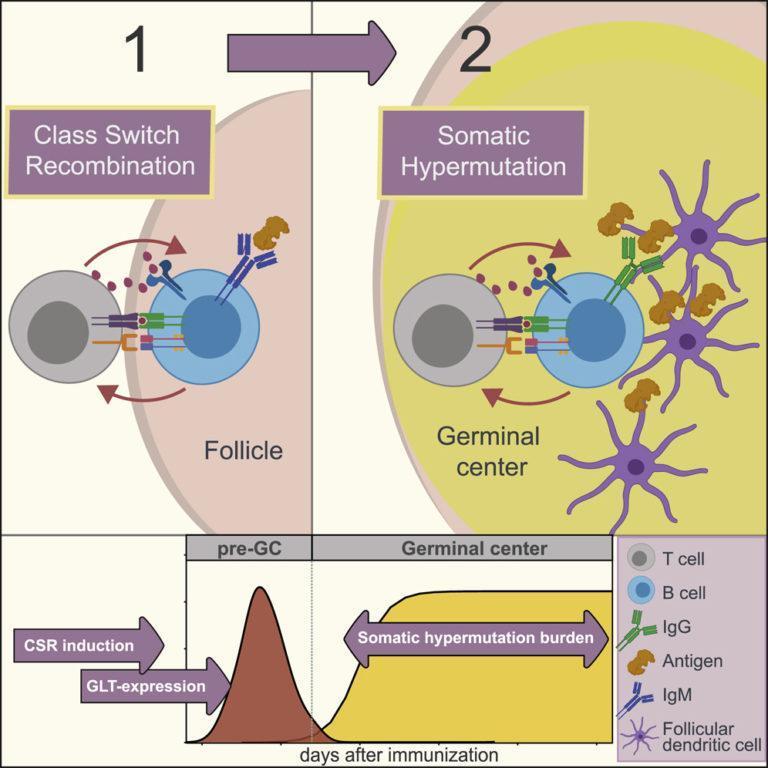

Diamond, Washington University School of Medicine, United States of America (2011) B Cell Repertoire Analysis Identifies New Antigenic Domains on Glycoprotein B of Human Cytomegalovirus which Are Target of Neutralizing Antibodies. Moreover, neutralizing human monoclonal antibodies could constitute powerful therapeutics to combat the infection in populations at risk for HCMV disease.Ĭitation: Pötzsch S, Spindler N, Wiegers A-K, Fisch T, Rücker P, Sticht H, et al. Our results will be useful for vaccine development since comparison of the immune response after natural infection with that induced by vaccination can be readily accomplished. The identification of these new antigenic domains was possible with the aid of a 3D molecular model of HCMV gB. Antibodies with antiviral capacity target two domains of gB that have not been previously identified.
#Antibody repertoire dominated by few clones free#
We find in different infected individuals that the vast majority of gB-specific B cells produce antibodies that cannot neutralize free virus. We have used this approach to analyze the antibody repertoire against glycoprotein B (gB) of human cytomegalovirus (HCMV), a major antigen for the induction of antiviral antibodies during infection and a constituent of experimental vaccines in humans. The isolation of antigen specific memory B cells and subsequent stimulation to antibody producing cells provides a powerful tool to study the antibody repertoire in infected individuals.

Understanding the repertoire of antiviral antibodies induced during infection is a necessary prerequisite to defining the protective activities of an antiviral antibody response.

The development of antibodies is a major defense mechanism against viruses. Collectively, these data will contribute to optimal vaccine design and development of antibodies effective in passive immunization. In accordance with previous nomenclature the domains were designated AD-4 (Dom II) and AD-5 (Dom I), respectively. Analysis of a larger panel of human sera from HCMV seropositive individuals revealed positivity rates of >50% against domain I and >90% against domain II, respectively. Domain I, located between amino acids (aa) 133–343 of gB and domain II, a discontinuous domain, built from residues 121–132 and 344–438. Two protein domains were found to be targeted by the majority of neutralizing antibodies. To map the target structures of these neutralizing antibodies, we generated a 3D model of HCMV gB and used it to identify surface exposed protein domains. Most neutralizing antibodies were found to bind to epitopes not located within the previously characterized antigenic domains (AD) of gB. Our findings have revealed that the vast majority (>90%) of gB-specific antibodies secreted from B-cell clones do not have virus neutralizing activity. HCMV gB represents a dominant viral antigenic determinant for induction of neutralizing antibodies during infection and is also a component in several experimental HCMV vaccines currently being tested in humans. To address this problem, we determined, for the first time, the B-cell repertoire against glycoprotein B (gB) of HCMV in different healthy HCMV seropositive individuals in an unbiased fashion. Characterizing the B-cell response in healthy infected individuals could aid in the design of optimal vaccines and therapeutic antibodies. However, current vaccine efforts are hampered by the lack of information on protective immune responses against HCMV. Efforts are underway to prepare effective subunit vaccines and therapies including antiviral antibodies. Human cytomegalovirus (HCMV), a herpesvirus, is a ubiquitously distributed pathogen that causes severe disease in immunosuppressed patients and infected newborns.


 0 kommentar(er)
0 kommentar(er)
